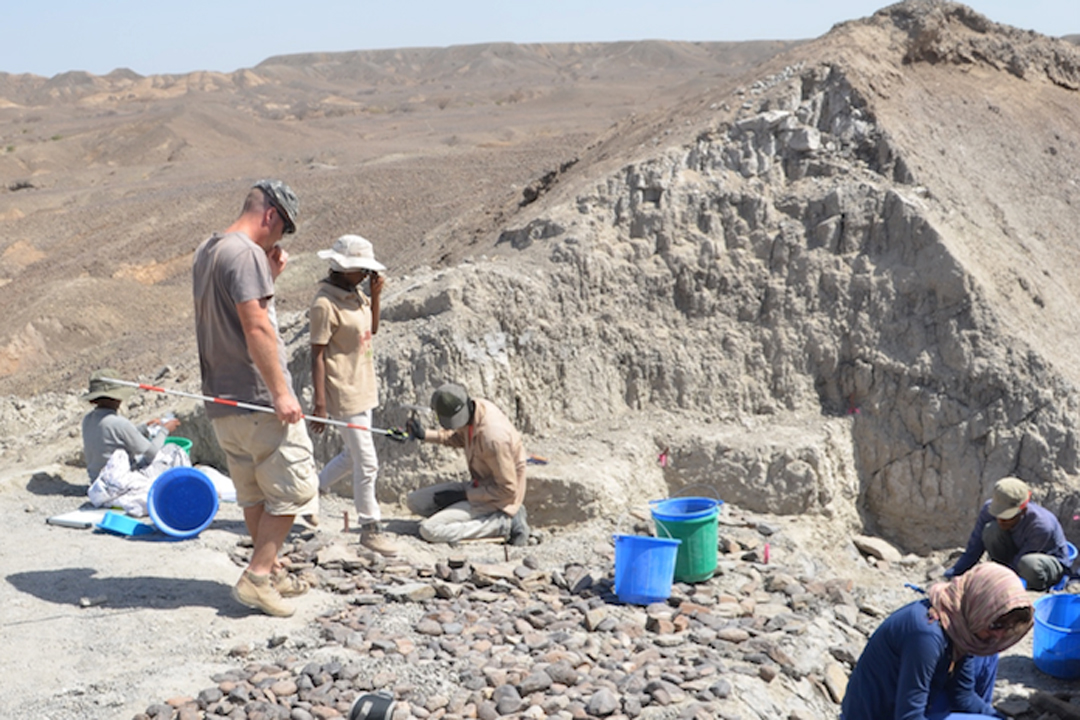A new archaeological site discovered in Ethiopia by an international team of researchers led by Associate Professor of Anthropology David Braun shows the origin of stone tool production dates back more than 2.58 million years. Previously, the oldest evidence for systematic stone tool production and use was 2.58 to 2.55 million years ago. The findings were recently published in Proceedings of the National Academy of Sciences.
Braun and his team began by excavating through meters of sediments at the site—known as Bokol Dora 1 or BD 1—by hand. The process took several years before the researchers were able to expose a layer of animal bones and hundreds of small pieces of chipped stone representing the earliest evidence of our direct ancestors making and using stone knives. The site provided the team with a wealth of information about how and when humans began to use stone tools.
“Given that primate species throughout the world routinely use stone hammers to forage for new resources, it seems very possible that throughout Africa, many different human ancestors found new ways of using stone artifacts to extract resources from their environment,” said Braun, the lead author on the paper.
To determine how long ago the newly discovered stone tools were used, geologists analyzed the magnetic signature of the site’s sediments and dated volcanic ash several meters below the site. Throughout Earth’s history, its magnetic polarity has reversed at intervals that can be identified. Other earlier archaeological sites near the age of BD 1 are in “reversed” polarity sediments. The BD 1 site is in “normal” polarity sediments. The reversal from “normal” to “reversed” happened about 2.58 million years ago, giving geologists the knowledge that BD 1 is older than all the previously known sites.
The team of researchers then began to wonder how their new stone tool discovery fit into the increasingly complex picture of human ancestors making and using tools.
What they found was that not only were these new tools the oldest artifacts yet ascribed to the “Oldowan”—a style of stone tools originally named after discoveries from Olduvai Gorge in Tanzania—but they also were distinct from tools made by chimpanzees, monkeys or even earlier human ancestors. The major differences appeared to be the ability for ancestors to systematically chip off smaller sharp-edged tools from larger nodules of stone. Chimpanzees and monkeys generally use tools for percussive activities, such as hammering and bashing food items like nuts and shellfish.
“Something changed about 2.6 million years ago, and our ancestors became more accurate and skilled at striking the edge of stones to make tools,” Braun noted. “The BD 1 artifacts capture this shift.”
Continued field investigations in the Afar region of northeastern Ethiopia are already producing more insights into the patterns of behavior in the earliest human ancestors. New sites have been found and the team of researchers will begin excavating them this year.


